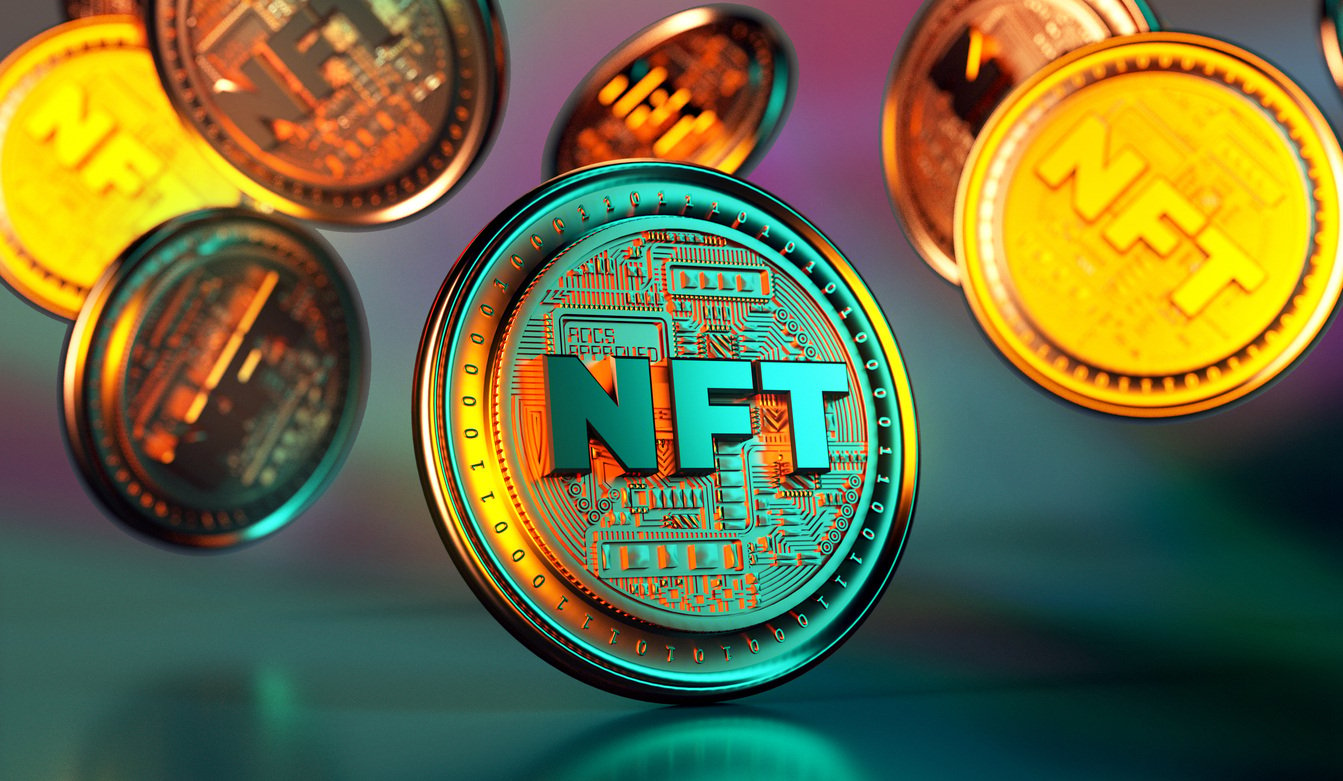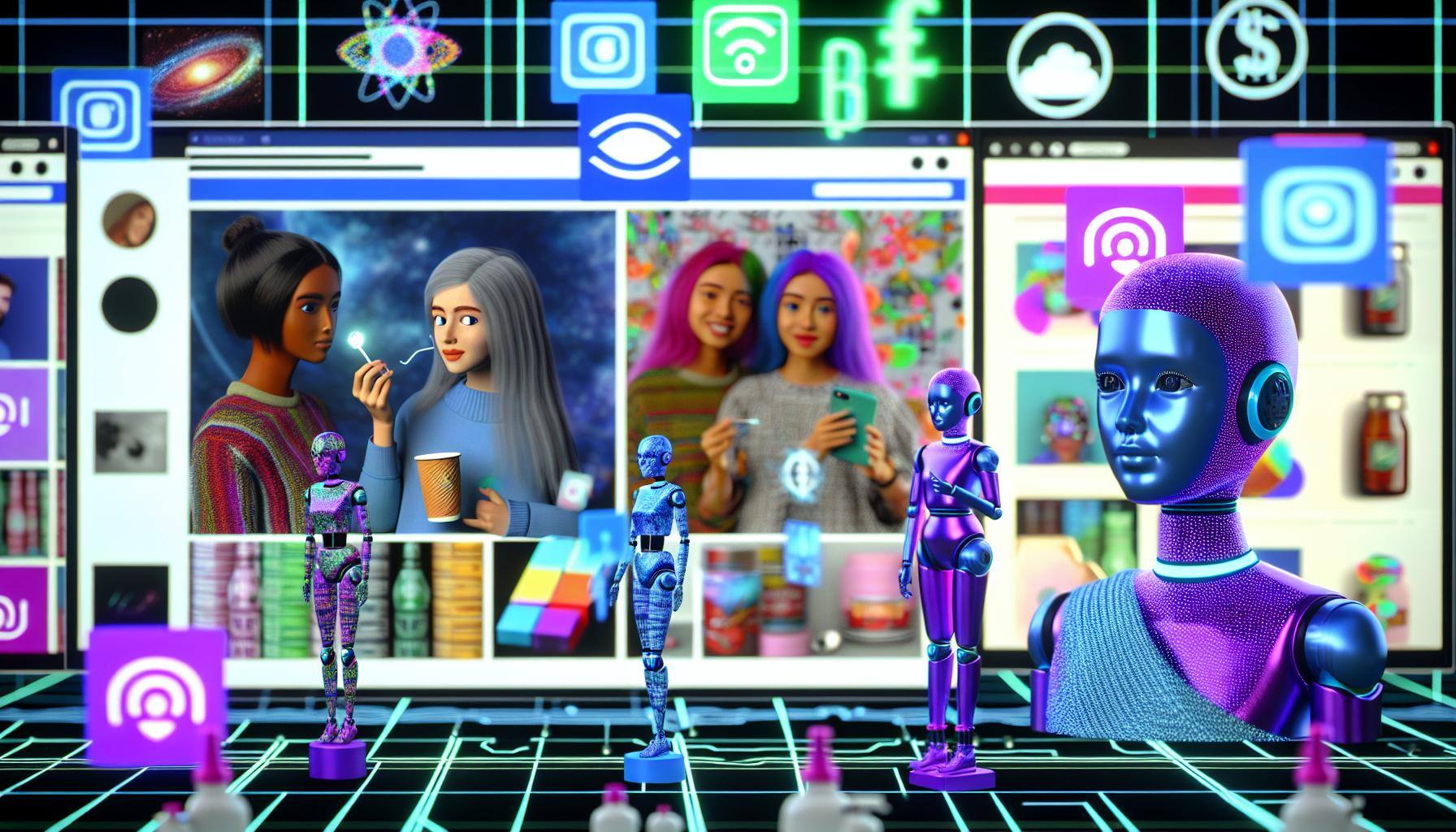5 min read
What Is NFT Marketing?
Discover the World of NFT Marketing Non-fungible tokens (NFTs) have taken the digital world by storm, transforming the way we think about ownership,...
6 min read
The Amazing Team at Virtual Marketer Max : May 2, 2025 3:14:26 AM
When you visit a website to find a product or service, a chatbot suddenly appears, trying to talk to you and give you the answers to your queries. You respond accordingly, and in a matter of minutes, you get your answers or are told what the next step is. This is a typical example of the use of conversational marketing.
With evolving technology, now AI chatbots are leading the way for conversational marketing. Businesses are adapting to this new way of customer interaction, as unlike traditional methods of customer service.
In this blog, we’ll explore how conversational marketing helps businesses connect with customers in real-time, building relationships and guiding them through the buying process. AI chatbots are key to scaling these personalized interactions, making it possible to engage thousands at once.
Conversational marketing focuses on real-time, one-on-one interactions between businesses and customers, using tools like AI chatbots, live chat, and messaging apps. Unlike traditional marketing, it personalizes communication, allowing businesses to understand customer needs, answer questions, and guide them through the buying process instantly.

AI chatbots are key to scaling these interactions, enabling companies to handle thousands of conversations at once without losing the personal touch.
By leveraging AI chatbots, businesses can initiate conversations, qualify leads, and provide tailored recommendations, all while maintaining a conversational tone. These bots use natural language processing and machine learning to understand user behavior and preferences.
This ensures each interaction feels personalized, even at scale. The scalability and personalization offered by AI chatbots are essential for businesses seeking to improve customer engagement and drive conversions.
The key trends in conversational marketing for 2025 focus on AI, omnichannel engagement, and innovative experiences that drive customer interaction.

AI-driven chatbots using natural language processing (NLP) and machine learning are becoming more sophisticated, offering tailored responses based on user behavior, preferences, and past interactions. These bots handle complex queries, provide product recommendations, and guide users through the buying journey, mimicking human-like interactions.
Brands are integrating conversational marketing across multiple channels—website chatbots, social media (e.g., WhatsApp, Instagram DMs), email, and voice assistants—to create seamless customer experiences. This ensures customers can engage wherever they are, with consistent messaging.
With the rise of voice assistants like Amazon Alexa and Google Assistant, brands are optimizing for voice search and enabling purchases through voice commands. This trend aligns with conversational marketing’s focus on convenience and natural dialogue.
Conversational marketing is incorporating augmented reality (AR) and virtual reality (VR) to create immersive try-on or product exploration experiences, often guided by chatbots. This enhances engagement and reduces purchase hesitation.
Brands are adopting a minimalist approach in conversational interfaces, focusing on clear, concise, and authentic messaging to avoid overwhelming users. This includes simple chatbot designs and genuine tone-of-voice that aligns with brand values.
Here are some real-world examples of how leading brands are using conversational marketing to engage customers and enhance their experience.
Domino’s website integrates its “AnyWare” ordering system, allowing users to order pizza via a chatbot or voice assistant. The chatbot, accessible on the homepage, lets users type or speak orders (e.g., “I want a pepperoni pizza”). It confirms details, suggests add-ons, and tracks delivery in real-time. The system also connects with platforms like Alexa and Google Assistant.
Nike’s website features a “Nike By You” chatbot that guides users through customizing shoes or apparel. The chatbot asks about style preferences, activities (e.g., running, basketball), and sizing, then recommends products or customization options. It uses user inputs to suggest designs and integrates with Nike’s AR tool, allowing users to visualize custom sneakers in 3D. The bot also offers real-time support for order tracking and returns.
Hellmann’s launched the "Whatscook" campaign in Brazil, where users could message a WhatsApp number to receive personalized recipe suggestions based on the ingredients they had at home. Real chefs guided participants through the cooking process via chat, sharing images and videos to enhance the experience. This initiative not only promoted product usage but also fostered deeper customer engagement through interactive cooking sessions.
Kiehl’s integrated a chatbot on their website that offers personalized skincare advice. Visitors can interact with the bot to receive product recommendations tailored to their skin type and concerns. The chatbot also provides information on product availability, promotions, and the brand's reward system, creating a seamless and informative shopping experience for customers.
AI chatbots are considered game-changers because they fundamentally transform how businesses and customers interact, automate processes, and deliver value across industries. Here are the key reasons:
-min.png?width=2664&height=3276&name=Why%20AI%20Chatbots%20Are%20Game-Changers%20-%20visual%20selection%20(1)-min.png)
Traditional customer service methods are often limited by working hours, weekends, and holidays, but AI chatbots are always on duty, working around the clock. This 24/7 availability implies that companies can reach global customers across time zones without paying additional staff or resources.
Running a business is costly and hiring customer support agents, training and onboarding them, scheduling them, and monitoring for quality all take resources. AI chatbots are a cheaper solution. They can take care of common questions, like “What’s your return policy?” and “Do you offer international shipping?” so human agents can take care of the complex issues.
Chatbots can begin a conversation with visitors on your site (or social media or any other digital platform), qualify leads, and collect valuable contact information by engaging visitors. Without the need for customers to fill out a form or initiate a question, AI chatbots can reach out to them in real-time.
AI chatbots can easily work across channels, whether it be website, social media or messaging platforms like WhatsApp and Facebook Messenger, delivering users a consistent experience. This means customers can interact with your brand wherever they choose, be it online chat on your website, a social inquiry, or help through messaging platforms.
AI chatbots increase customer satisfaction with their consistency, instant response time, and personalized experience. Customer satisfaction also increases through automation of repetitive tasks allowing human agents to focus on more complex issues and reach faster resolution times for customers requiring complex assistance.
Artificial intelligence (AI) models are constantly learning from their interactions with us, thanks to improvements in natural language processing (NLP) and machine learning. While early chatbots were used to be cumbersome in any chat or text-based interaction and frequently failed to understand simple questions, chatbots today can understand contexts, detect tones, and in several cases, share funny quips within conversations.
AI chatbots are experiencing rapid transformation, driven by advancements in natural language processing (NLP), machine learning, and integration with emerging technologies. Here are the major trends and innovations expected to define the future of AI chatbot development:
Chatbots are evolving to recognize and respond to users’ emotions in real time, using advanced sentiment analysis and emotion detection.
This allows for more empathetic, human-like interactions, with bots adapting their tone and suggestions based on the user’s mood-for example, offering supportive responses when frustration is detected.
Future chatbots will leverage deep analytics and AI to tailor conversations, recommendations, and solutions to individual user preferences and behaviors.
They will predict needs, remember context across sessions, and proactively offer relevant assistance, making interactions more efficient and engaging.
Chatbots are moving beyond text, integrating voice, images, and even video to create seamless multimodal experiences.
Voice-enabled chatbots will allow users to switch effortlessly between speaking and typing, enhancing accessibility and convenience.
NLP advancements, including transformer models and few-shot/zero-shot learning, enable chatbots to understand complex, nuanced language and context over longer conversations.
Enhanced multilingual capabilities will break down language barriers, allowing global communication without friction.
Next-generation chatbots will act as autonomous agents, capable of managing entire workflows and processes-such as booking appointments, analyzing data, or handling transactions-without human intervention.
This shift will streamline business operations and free up human workers for more strategic tasks.
Chatbots will increasingly connect with Internet of Things (IoT) devices and enterprise systems, enabling real-time data-driven interactions and control over smart environments.
AI chatbots are expanding beyond customer service into sectors like healthcare, finance, education, and HR, providing specialized support and automating complex industry workflows.
As chatbots handle more sensitive data and decision-making, there will be a stronger emphasis on privacy-preserving technologies (like federated learning) and ethical AI frameworks to ensure trust and compliance.
Our proprietary AI-powered Lead Magnet features a custom AI chat agent designed to intelligently track visitor activity, respond to their questions, and guide them toward the next step—just like a human assistant. Unlike human agents, however, this chatbot operates 24/7, delivering timely, automated messages that significantly reduce time and resource costs. It can seamlessly follow up within a 24-hour window, trigger calls or emails, and offer special promotions to drive customer action and boost conversions.
You could be a business owner or just a shopper that is curious, but one thing is for sure: AI chatbots like Lead Magnet are here to stay, and they’re making conversational marketing feel more human than ever.
What are you waiting for? Get our exclusive Lead Magnet now discover how AI chatbots can transform your customer connections. Start building relationships that convert!

5 min read
Discover the World of NFT Marketing Non-fungible tokens (NFTs) have taken the digital world by storm, transforming the way we think about ownership,...

3 min read
In today's hyper-competitive digital world, customer retention is not just a buzzword; it is truly the foundation of an ongoing business growth....

5 min read
Introduction In recent years, social media has witnessed a new breed of influencers, leveraging artificial intelligence (AI) to captivate audiences...